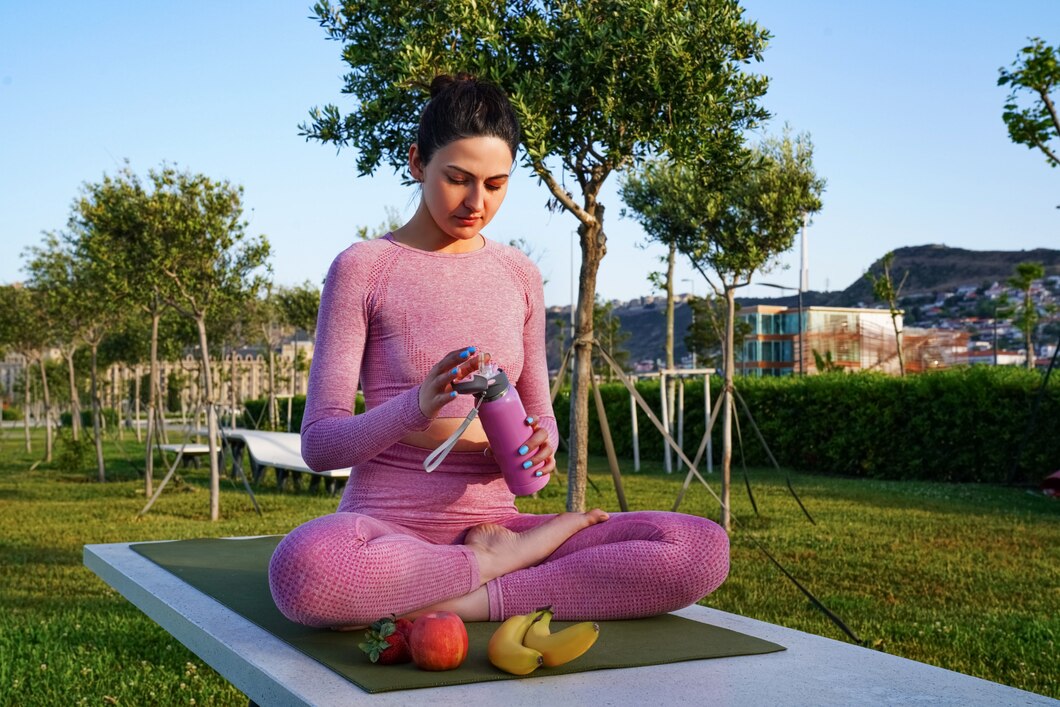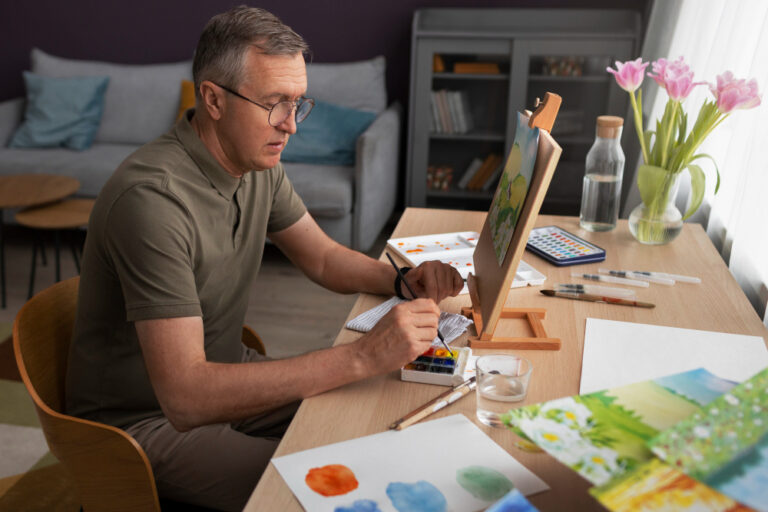
In an increasingly hyper-connected world, the constant ping of notifications, the allure of endless feeds, and the ever-present screen can lead to feelings of overwhelm, anxiety, and mental fatigue. This pervasive digital saturation has given rise to the essential practice of a digital detox. Far more than just turning off your phone, learning how to do a digital detox is a deliberate act of disconnecting from technology to reconnect with yourself and the physical world.
This comprehensive digital detox guide is designed to provide actionable digital detox tips, specifically catering to digital detox for beginners, offering practical digital detox ideas that will help you reclaim your focus, reduce stress, improve sleep, and enhance your overall well-being. By intentionally stepping away from screens, you can reset your relationship with technology and rediscover the richness of an unplugged life.
The benefits of a digital detox are manifold, ranging from improved concentration and reduced eye strain to better sleep quality and enhanced real-world relationships. However, for many, the idea of disconnecting can feel daunting, even impossible. Our lives are intertwined with digital tools for work, communication, and entertainment. This guide aims to demystify the process, offering a clear roadmap to embark on your digital detox journey, whether you’re aiming for a few hours of peace or a longer period of disconnection.

Understanding the “Why”: The Purpose of a Digital Detox
Before diving into the “how,” it’s crucial to understand the driving force behind a digital detox. It’s not about demonizing technology, but about gaining control over its influence in our lives.
- Reclaiming Attention: Our attention is a finite resource, constantly fragmented by digital distractions. A detox helps you regain control over where your focus goes.
- Reducing Mental Fatigue: The constant processing of information, decision fatigue from endless choices, and the pressure of constant availability can be exhausting. Disconnecting allows your brain to rest and recharge.
- Improving Mood and Reducing Anxiety: The “comparison trap” of social media, the negativity bias of news feeds, and the fear of missing out (FOMO) can significantly contribute to anxiety and depression. A detox breaks these cycles.
- Enhancing Sleep Quality: Blue light from screens disrupts melatonin production, while late-night scrolling stimulates the brain. Disconnecting before bed is crucial for restorative sleep.
- Fostering Real-World Connections: When eyes are glued to screens, genuine human interaction suffers. A detox creates space for deeper, more meaningful in-person relationships.
- Sparking Creativity and Mindfulness: Without constant digital input, your mind has room to wander, reflect, and engage in creative thought. You become more present in the moment.
Recognizing these powerful benefits is the first step in motivating yourself to learn how to do a digital detox.
Step 1: Identify Your Purpose and Establish Clear Goals
Before you embark on any digital detox, understand why you’re doing it and what you hope to achieve. This personal motivation will be your anchor when the urge to check your phone inevitably strikes. This is foundational for any digital detox guide.
How to Do It:
- Identify Your Triggers: What apps or digital activities consume most of your time? What emotions do you experience when you’re online (stress, comparison, boredom)?
- Envision the Benefits: How do you want to feel? More present, less anxious, better rested, more focused?
- Set Specific, Achievable Goals:
- Duration: Start small. Instead of a weekend-long detox, aim for “no phone during dinner,” “no social media for one hour after waking,” or “a screen-free evening once a week.”
- Scope: What technology are you detoxing from? Just social media? All apps? Your phone entirely? Work devices vs. personal devices? For digital detox for beginners, starting with just one category (e.g., social media) is often best.
- Replacement Activities: What will you do instead? (More on this in Tip 6).
- Write It Down: Physically write down your “why” and your goals. This makes them tangible and reinforces your commitment.
Example: “My goal for this digital detox is to stop endlessly scrolling social media in the evenings so I can read a physical book and get better sleep. I will put my phone away at 8 PM every night this week.” This clear objective makes it easier to resist temptation and provides a measure of success, crucial for effective digital detox tips.

Step 2: Prepare Your Digital Environment (The Pre-Detox Cleanup)
Going cold turkey without preparation can feel overwhelming. A little planning can significantly smooth your transition and make your detox more effective. This is a key step in any digital detox guide.
How to Do It:
- Notify Important Contacts: If you’re going for a longer detox (e.g., a full day or weekend), let close family, friends, and colleagues know you’ll be largely unreachable. This manages expectations and prevents anxiety about missing urgent messages.
- Automate Essentials: Set up “out of office” replies for email, or schedule important messages to go out before your detox begins.
- Declutter Your Digital Space:
- Delete or Hide Trigger Apps: Temporarily delete social media apps, addictive games, or news apps from your phone. If deleting feels too extreme for digital detox for beginners, move them to an obscure folder on the last screen.
- Turn Off Notifications: Go into your phone settings and disable all non-essential notifications. This eliminates the constant pings vying for your attention.
- Log Out: Log out of social media and email accounts on your computer. The extra step of logging back in can be a powerful deterrent.
- Charge Essential Devices (Strategically): If you’re completely unplugging, charge your phone and then put it away in a drawer or a different room. If you need it for emergencies, keep it charged but out of sight.
Example: Before starting your evening detox, text your partner: “Hey, I’m putting my phone away until morning for my digital detox. Call if it’s an emergency, otherwise I’ll chat with you tomorrow!” Then, disable Instagram notifications and move its icon off your home screen.
Step 3: Create a Physical “Unplugged” Space
Your physical environment plays a huge role in supporting or hindering your detox efforts. Designate areas where screens are actively discouraged. This is one of the most practical digital detox ideas.
How to Do It:
- Designate Screen-Free Zones: Establish areas in your home where phones, tablets, and laptops are not allowed. The bedroom and dining table are excellent starting points.
- Create a “Charging Station” Away from You: Instead of charging your phone next to your bed, set up a dedicated charging spot in the kitchen, living room, or hallway. This removes the temptation for late-night or early-morning scrolling.
- Prepare Your Analog Alternatives: Have physical books, journals, art supplies, board games, or crafting materials easily accessible in your unplugged space. Make the offline choice the easy choice.
- Utilize Physical Clocks/Alarms: Use a traditional alarm clock instead of your phone’s alarm to avoid the temptation of checking notifications first thing in the morning.
Example: Keep a stack of novels and your journal on your bedside table, and plug your phone into a charger in the living room. This transforms your bedroom into a sanctuary for rest and reading, supporting your digital detox tips.
Step 4: Plan Engaging Offline Activities
The biggest challenge for many is knowing what to do once the screens are off. Actively planning engaging digital detox ideas is critical to success. This turns passive avoidance into active enjoyment.
How to Do It:
- Brainstorm a “Digital Detox Activities” List: Before your detox, list 10-20 things you enjoy doing that don’t involve screens.
- Creative: Drawing, painting, knitting, writing, playing a musical instrument.
- Physical: Walking, hiking, cycling, gardening, yoga, stretching.
- Social: Calling a friend, writing a letter, having a face-to-face conversation.
- Restorative: Meditating, reading a physical book, taking a bath, cooking.
- Learning: Studying a language with flashcards, doing a puzzle, learning a new craft.
- Schedule Them: Just as you’d schedule screen time, schedule your offline activities.
- Keep It Handy: Keep your list of digital detox ideas visible (on the fridge, in your planner) for inspiration when you feel the urge to pick up your phone.
Example: If your goal is a screen-free Saturday, plan to start with a morning walk, then spend an hour gardening, followed by reading your book, and end the afternoon by playing a board game with family. This structured approach helps how to do a digital detox successfully.
Step 5: Embrace Mindful Moments and Boredom
One of the unexpected benefits of a digital detox is rediscovering moments of quiet and even boredom. These are crucial for creativity and self-reflection.
How to Do It:
- Resist the Immediate Urge: When you find yourself with a spare moment (waiting in line, during a commute, standing in the kitchen), resist the automatic grab for your phone.
- Observe Your Surroundings: Instead of scrolling, look around you. Notice the details, the people, the sounds, the smells. Engage your five senses.
- Let Your Mind Wander: Allow your thoughts to drift. This is where insights often occur, problems get solved, and creativity sparks. Boredom is not a void to be filled, but a space for your mind to process.
- Journal Your Thoughts: Use a physical journal to jot down what comes to mind during these moments of “unplugged” reflection. This is a powerful digital detox tip.
Example: Instead of scrolling through social media while waiting for your coffee, just stand there. Notice the barista, the other customers, the street outside. Let your thoughts meander without judgment.
Step 6: Involve Others for Support and Accountability
A digital detox doesn’t have to be a solo mission. Involving friends, family, or even colleagues can provide encouragement and accountability. This is especially helpful for digital detox for beginners.
How to Do It:
- Share Your Goals: Tell a trusted friend or family member about your detox plans. They can cheer you on and gently remind you if they see you slipping.
- Detox Together: Plan a screen-free outing or weekend with friends or family. Go camping, hike, or simply enjoy a meal where everyone agrees to put their phones away.
- Create Accountability Rules: For a household, agree on screen-free zones or times. “No phones at the dinner table” is a common and effective rule.
- Find an “Accountability Buddy”: Check in with each other regularly about your progress and challenges.
Example: Suggest to your best friend, “Let’s do a screen-free Sunday next month. We can go for a hike and then grab lunch without our phones.” This shared experience makes how to do a digital detox more enjoyable.
Step 7: Reflect and Adjust (The Post-Detox Review)
A digital detox is not a one-time event; it’s a process of learning and adapting. Reflecting on your experience is crucial for long-term success.
How to Do It:
- Journal Your Experience: After your detox period (even if it was just an evening), write down:
- How did you feel during the detox?
- What were the biggest challenges?
- What did you enjoy most about being unplugged?
- What insights did you gain?
- What digital habits do you want to change permanently?
- Review Your Goals: Did you meet your initial goals? If not, why? What can you adjust for next time?
- Identify Lingering Triggers: Are there still certain apps or times that are particularly difficult to avoid? Develop specific strategies for those.
- Plan Your Re-entry (if applicable): If you’ve done a longer detox, think about how you want to reintroduce technology mindfully. What will your new rules be?
Example: After your screen-free evening, you might realize you felt a bit anxious at first but then deeply relaxed. You loved reading. Your biggest challenge was the urge to check the news. Your new rule will be: “No news apps after 7 PM.” This continuous adjustment makes it an effective digital detox guide.
Step 8: Make It a Sustainable Lifestyle, Not a One-Off Event
The ultimate goal of learning how to do a digital detox is not just to survive a temporary break, but to integrate healthier digital habits into your everyday life. This is the essence of sustainable digital detox tips.
How to Do It:
- Regular Mini-Detoxes: Don’t wait for overwhelm. Schedule regular short detoxes—a few hours each day, a screen-free day once a month, or a tech-free vacation once a year.
- Maintain Boundaries: Keep your screen-free zones and times active. These small, consistent habits add up.
- Curate Your Tech: Regularly review your apps, notifications, and subscriptions. Remove anything that doesn’t genuinely serve you.
- Prioritize Real Life: Consciously choose real-world interactions, hobbies, and experiences over digital ones.
- Be Patient with Yourself: Changing habits takes time. There will be days you slip up. Acknowledge it, learn from it, and get back on track without judgment.
Example: Your initial evening detox becomes a permanent routine. You decide to extend your “no social media” rule to include the first 30 minutes of your workday. These small, ongoing commitments fundamentally change your relationship with technology.
Conclusion
Learning how to do a digital detox is an empowering journey towards greater well-being, presence, and intentional living. In a world constantly vying for our attention, taking control of our digital habits is a profound act of self-care.
By defining your “why,” preparing your environment, planning engaging offline activities, embracing mindful moments, seeking support, and consistently reflecting and adjusting, you can successfully implement these digital detox tips and create a sustainable, healthier relationship with technology.
This comprehensive digital detox guide, with its practical digital detox ideas and focus on digital detox for beginners, provides the roadmap to a more balanced and fulfilling life, proving that sometimes, the most connected we can be is when we choose to disconnect.



